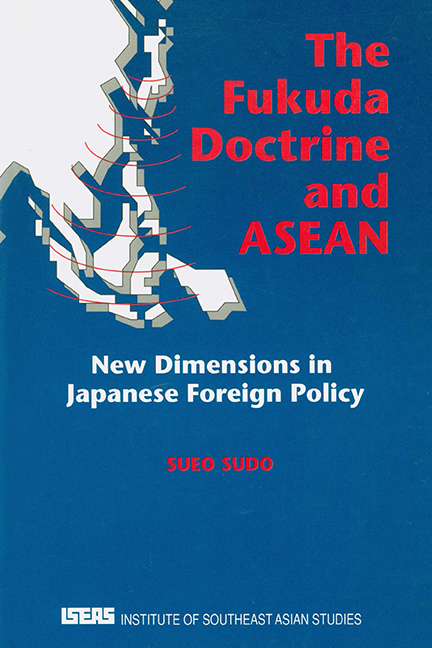Book contents
- Frontmatter
- Dedication
- Contents
- List of Tables
- Preface
- Abbreviations
- Introduction
- chapter one A Framework for Analysing Japanese Policy Towards Southeast Asia
- chapter two Post-war Japan's Re-entry into Southeast Asia
- chapter three Japan's Policy Towards Regional Development
- chapter four External Challenge and Changing Japan-Southeast Asia Relations; 1975–77
- chapter five A Changing Southeast Asia in Japanese Politics
- chapter six Formulating the First Doctrine in Japanese Foreign Policy
- chapter seven Japan's ASEAN Policy, 1977–87
- chapter eight Conclusion
- Appendices
- Bibliography
- Index
- THE AUTHOR
chapter three - Japan's Policy Towards Regional Development
Published online by Cambridge University Press: 21 October 2015
- Frontmatter
- Dedication
- Contents
- List of Tables
- Preface
- Abbreviations
- Introduction
- chapter one A Framework for Analysing Japanese Policy Towards Southeast Asia
- chapter two Post-war Japan's Re-entry into Southeast Asia
- chapter three Japan's Policy Towards Regional Development
- chapter four External Challenge and Changing Japan-Southeast Asia Relations; 1975–77
- chapter five A Changing Southeast Asia in Japanese Politics
- chapter six Formulating the First Doctrine in Japanese Foreign Policy
- chapter seven Japan's ASEAN Policy, 1977–87
- chapter eight Conclusion
- Appendices
- Bibliography
- Index
- THE AUTHOR
Summary
In the course of the reparations negotiations, as we have seen in the previous chapter, Japanese policy towards Southeast Asia came to be viewed as an economic stepping-stone back into the region. Furthermore, Japan's economic aid, although marginal in its volume and initiated largely due to external pressure in the late 1950s, was characterized by strict conditions and tied loans. As in the case of the reparations payments, Japan's aid policy was employed to promote foreign trade. As a result, in 1964 Japan's trade with the Southeast Asian region as a whole surpassed that of the United States, becoming first or second in importance in the trade of nearly every single country in the region.
Japan's post-war economic growth has been phenomenal since the early 1960s. Rapid expansion of the Japanese economy has raised expectations and attracted accolades while at the same time generating considerable apprehension, resentment and criticism. In some instances, Japan's economic growth by the mid-1960s appeared to have occurred at the expense of other countries. As a price for its rapid economic penetration, Japan had to confront a serious blow in the form of boycott movements against Japanese goods in the early 1970s. Anti-Japanese movements in 1974 thus became the catalyst in forging a new relationship between Japan and Southeast Asia.
Japan's Southeast Asian policy began to loom large in its economic diplomacy during the Hayato Ikeda (1960–64) administration. Following Kishi's first official visit to the region; Ikeda visited Southeast Asia twice in 1961 and 1963 and tried to play a mediating role in the Indonesia-Malaysia conflict, although his main focus was on Japan's domestic economy, that is, an income-doubling policy. Southeast Asia thus gained renewed interest in Japan's foreign policy. At the same time, Southeast Asia began a quest for regional identity and co-operation. Consequently, intra-regional interactions became more pronounced and inter-regional contacts increased, particularly with the major powers. It was these changing environments surrounding Japan that had a significant impact upon the foreign policies of Southeast Asia and the major powers.
- Type
- Chapter
- Information
- The Fukuda Doctrine and ASEANNew Dimensions in Japanese Foreign Policy, pp. 53 - 76Publisher: ISEAS–Yusof Ishak InstitutePrint publication year: 1992

